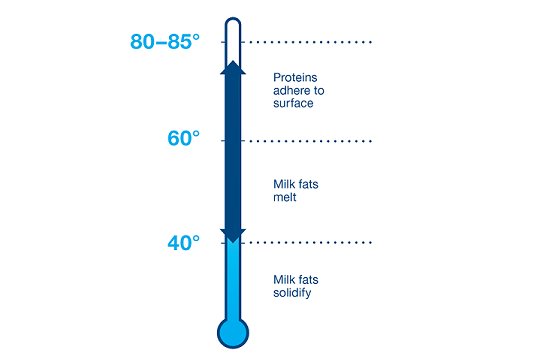TEMPERATURE IS A CRITICAL ELEMENT IN ANY CLEANING PROCESS
![]()
The role of heat is to improve the dissolution and emulsification of different materials and to enhance detergent action. It is important to use the right temperature at each stage. If the temperature is too low – milk fats will solidify,
if it is too high - milk proteins will adhere to surfaces, becoming very difficult to remove.

Pre Rinse: A warm water rinse, to get rid of most of the milk residues after milking. The rinse should continue until the discarded effluent water is clear. The temperature should not exceed 45°C in order to avoid denaturing any native proteins, which would then become much more difficult to clean, but should also not be lower than 35°C because then fats will solidify.
Main Rinse: A circulation cleaning with a cleaning solution containing the detergent. The water temperature is usually around 80° to 85°C at the start and is decreased to about 40° to 55°C at the end of the circulation. An actual cleaning temperature of 60-70°C will also boost detergent efficacy. The end temperature should never be below 40°C since this could cause the formation of fatty coatings.
Post Rinse: A final rinse, usually with cold or luke warm water, to remove any residuals of the cleaning solution. “The last glass of (post-rinse) water coming out of your system, should be drinkable!”